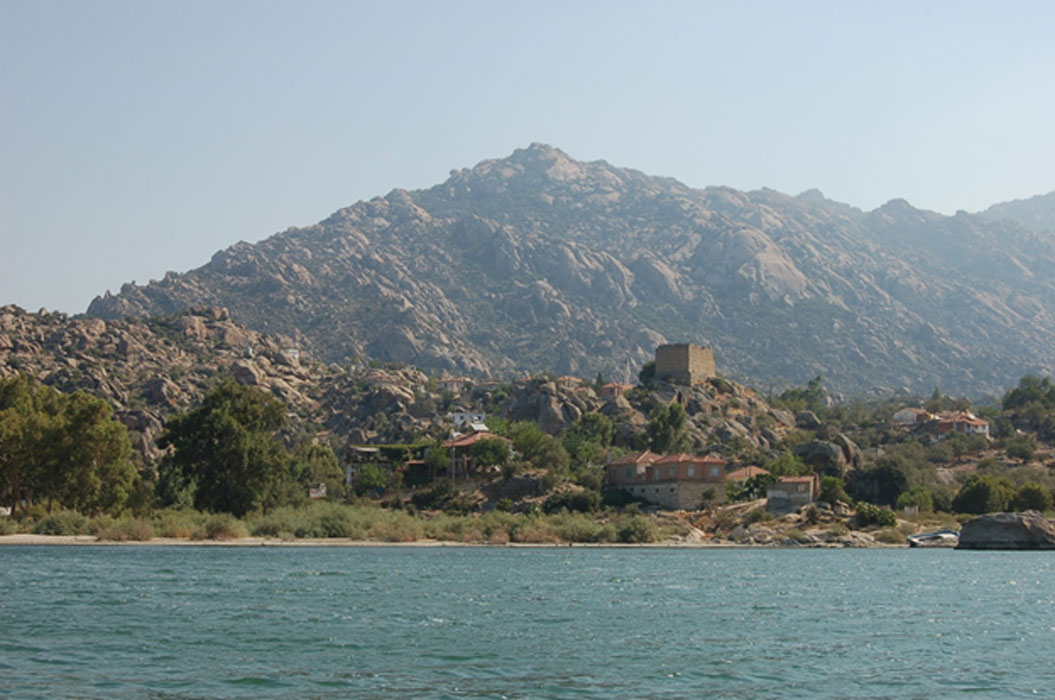Herakleia Under Latmos: A Prosperous City of the Past and its Mystical Connection with the Moon
Herakleia under Latmos is an ancient site situated on the southwestern coast of modern day Turkey. The site has under Latmos as its epithet due to its location on the southern slopes of Mount Latmos. Herakleia was an ancient city, and was occupied by various cultures, including the Carians, Greeks, Romans, and Byzantines. This city prospered during ancient times.
Geographical changes in the area, however, affected Herakleia, and all that remains of this great city today are its ruins. The modern village that now occupies the area stands in stark contrast to the city’s former glory.
Early Inhabitants
Mount Latmos was inhabited by humans as early as the 6th or 5th millennium BC, as evidenced by the rock paintings found in its caves. Herakleia was founded at a much later time, and is believed to have originally been a Carian city by the name of Latmos.
From the 9th century BC onwards, the region of Caria was a recipient of cultural influence from Greece. However, it is thought this city on the edge of Ionian territory had more communication with the Ionian region than with the rest of Caria.

Map showing the silting evolution of Miletus Bay due to the alluvium brought by the Maeander River during antiquity. (CC BY-SA 3.0)
A Defensive Alliance
During the 5th century BC, Herakleia was part of the Delian League, a confederacy of Greek city states under the leadership of Athens. This league was originally formed with the objective of defending its members from the threat of the Persian Empire. Herakleia paid a tribute of one talent each year to the Delian League, hence making it one of the more important Carian centers within that alliance.
- The Mausoleum of Halicarnassus: A Wonder of the Ancient World
- Celestial Goddess Selene: The Star of the Night

Temple of Athena. (Public Domain)
Greek and Roman Rule
During the 4th century BC, Herakleia was captured by the ruler of Caria, Mausolus (best known for his construction of the Mausoleum at Halicarnassus). Under the guise of friendship, Mausolus was able to enter the city with his army, and claimed it for himself.
The tyrant changed the name of the city from Latmos to Herakleia, in accordance with his Hellenizing policy. Mausolus is also credited with the building of the city’s fortifications, and it has been speculated that this project was undertaken as a compensation for his trickery.

The City fortification with Lake Bafa in the background. (Public Domain)
Herakleia was liberated from Carian rule shortly after Mausolus’ death by Alexander the Great. After the Greeks, it was the Romans’ turn to rule.
During the Greek and Roman periods, Herakleia prospered. This was due to the fact that during those times, the city was a seaport that was connected to the Aegean Sea via the Latmian Gulf. This gulf was eventually disconnected from the sea as a result of soil deposition by the River Maeander, leaving behind a lake known as Lake Bafa. As a result, the city lost its prosperity in later times.

Colossal statue of a man, traditionally identified with Mausolus, king of Caria. (Public Domain)
Endymion and the Moon
Apart from this economic importance, Herakleia had some religious significance. Christianity is said to have arrived in the area at quite an early period. This has been attributed to the secluded nature of the region, which attracted hermits and monks to live there. Prior to the coming of Christianity, Herakleia was associated with a Carian mystic by the name of Endymion.
- Necromanteion – The Ancient Temple of the Dead
- The Grand and Sacred Temple of Artemis, A Wonder of the Ancient World
According to one myth, Endymion spent his entire life studying the moon, and after discovering its true orbit, the mystic died. It is said that during his studies, he had learnt the name of God from the moon, though was not able to tell it to any of his followers.
In Strabo’s Geography, it is written that Endymion’s tomb could be found near the city. Pausanias, in his Description of Greece, also wrote that the mystic had a shrine on Mount Latmos, as it was there than Endymion had retired. The writer also mentions that the Eleans too claim that the tomb of Endymion was situated in their territory.

The Sleeping Endymion. (CC BY-SA 3.0)
Decline of the City
Herakleia may have been inhabited until as late as the 10th century AD. It was perhaps around this time that the Latmian Gulf was separated from the Aegean Sea. No longer connected to the sea, the city lost its economic importance, eventually forcing its inhabitants to move away from it in search of better economic prospects.
Featured image: The village of Kapıkırı is situated among the remains of ancient Heraclea by Latmus. Photo source: Public Domain
By Wu Mingren
References
Hall, H., 2015. Ancient marvels in a monumental setting: Herakleia Latmos. [Online]
Available at: http://www.petersommer.com/blog/archaeology-history/herakleia-latmos/
Pausanias, Description of Greece [Online]
[Jones, W. H. S., Omerod, H. A. (trans.), 1918. Pausanias’ Description of Greece.]
Available at: http://www.theoi.com/Text/Pausanias1A.html
Rough Guides Limited, 2016. Heracleia ad Latmos. [Online]
Available at: http://www.roughguides.com/destinations/europe/turkey/central-southern-aegean/southern-aegean/bafa-g%C3%B6l%C3%BC/heracleia-ad-latmos/
Strabo, Geography [Online]
[Jones, H. L. (trans.), 1917-32. Strabo’s Geography.]
Available at: http://penelope.uchicago.edu/Thayer/E/Roman/Texts/Strabo/home.html
turcom.net, 2013. Heraclea under Latmos. [Online]
Available at: http://turcom.net/heraclea-under-latmos/
www.kariapansiyon.com, 2016. History & Region. [Online]
Available at: http://www.kariapansiyon.com/history-region.html
www.perseus.tufts.edu, 2016. Herakleia under Latmus (Site). [Online]
Available at: http://www.perseus.tufts.edu/hopper/artifact?name=Herakleia+under+Latmus&object=site



















